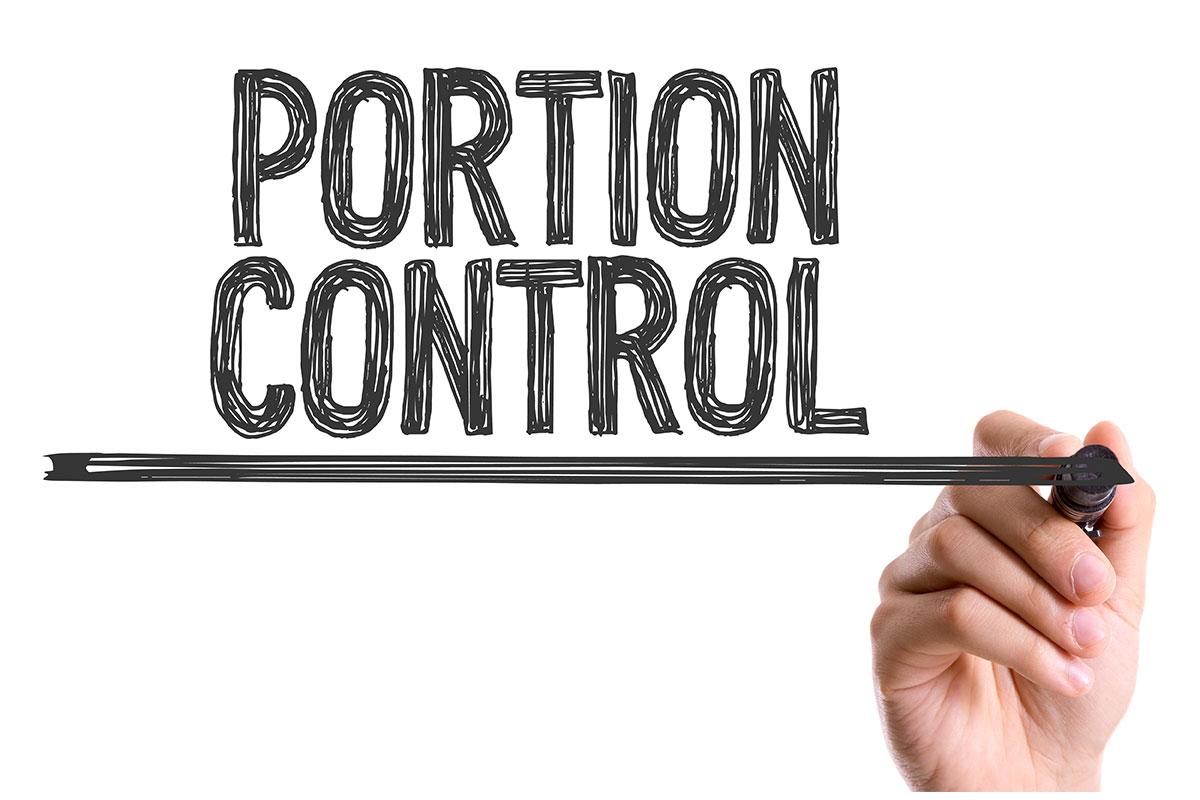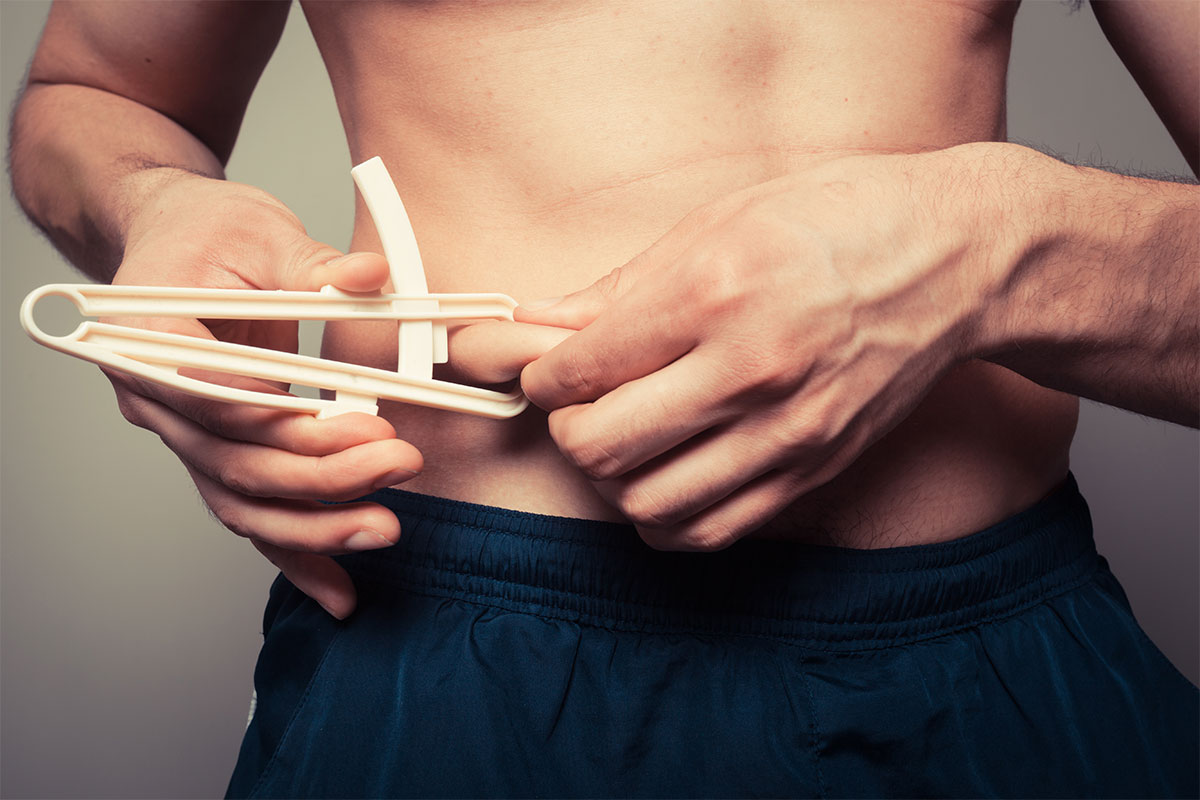Why am I Gaining Weight Despite Diet and Exercise? │ QA
If you’re careful with your nutrition, working out weekly, and still experiencing problems with your weight, take a moment to read this QA.



I am a 5’7″, 225 lb. male and I just started going to LA Fitness as I am trying to lose weight. I am trying to do this alone, but I need some nutrition advice. I am going to the gym for 6 days a week, doing 30-45 minutes of cardio every day and some weight training, but I would like to know how to eat right. I would like some tips on how to eat properly. Can you give me any advice that would help me lose the weight fast or at a steady pace?
– Jeremy L.

Welcome, Jeremy! Bravo on your consistency working out. Some people’s appetites increase with greater exercise à energy deficits from physical activity may be neutralized by compensatory intake. That means you may be eating more than you think. You may want to consider portion control as a first step to eating right. Look for areas you can cut back on volume. Order smaller servings or split meals to allow for leftovers. The idea isn’t to reduce drastically and cause hunger but to pare down consumption up to 25 percent. Once your intake is at a level to just satisfy you, then turn to improving your food choices. See our previous post The 3 Pronged Attack for Weight Loss – DIET for examples of proper eating plans.
– Debbie J., MS, RD
This article should not replace any exercise program or restrictions, any dietary supplements or restrictions, or any other medical recommendations from your primary care physician. Before starting any exercise program or diet, make sure it is approved by your doctor.
Some questions have been edited for length and/or clarity.
 Have a nutrition question? Our registered dietitian is ready to help!
Have a nutrition question? Our registered dietitian is ready to help!
Email nutrition@lafitness.com or submit your question below and it may be featured in an upcoming article!
If you’re careful with your nutrition, working out weekly, and still experiencing problems with your weight, take a moment to read this QA.
Blood sugar control isn’t easy. These are Debbie’s top recommendations for how to address weight control with Type II Diabetes.
It's easier to work hard when you’ve got a game plan. Here are some options to help keep you moving until the last second of your workout!

On this episode of ‘Ask A Trainer’ we speak with LA Fitness Pro Results® trainer Morgan C., and get her expert advice on how much weight is safe to lift while pregnant.
**Selected submissions will be featured on the LA Fitness blog and possibly other LA Fitness digital media entities & websites. By making a submission, you hereby grant LA Fitness a non-exclusive, perpetual, worldwide, irrevocable license to use and make copies of the contents of such submission for any purpose and in any medium whatsoever, and you hereby waive and relinquish any copyright or other intellectual property right you may have in the contents of such submission and your right to pursue any claim for LA Fitness’s violation of those intellectual property rights.
If you’re careful with your nutrition, working out weekly, and still experiencing problems with your weight, take a moment to read this QA.
Blood sugar control isn’t easy. These are Debbie’s top recommendations for how to address weight control with Type II Diabetes.
It's easier to work hard when you’ve got a game plan. Here are some options to help keep you moving until the last second of your workout!


I need a 1,200-calorie meal plan that’s super high in protein and has the required fiber needed. Any suggestions?!
– Trina H.

We don’t provide weekly or monthly meal plans, but to get you started here is a sample day for a very high protein (35% calories), 25+ grams fiber, 1,200 calorie day:
Analysis on www.FitDay.com by a Registered Dietitian Nutritionist = 1193 calories, 35% prot (106 gm), 31 gm fiber
Make your own weekly rotation! You can substitute two plums or a cup of strawberries for the orange, other very lean proteins for the fish and chicken, plain Greek yogurt + salsa for the hummus, and another green vegetable for the broccoli or spinach.
Most 1,200 calorie plans we observed online provide 70-80 grams protein and up to 20 grams fiber. To increase the fiber and protein of other plans, substitute fat-free legumes and whole grains for other starches, opt for the least fat proteins available and limit starch to 1 per meal while doubling up on vegetables.
– Debbie J., MS, RD
This article should not replace any exercise program or restrictions, any dietary supplements or restrictions, or any other medical recommendations from your primary care physician. Before starting any exercise program or diet, make sure it is approved by your doctor.
Some questions have been edited for length and/or clarity.
 Have a nutrition question? Our registered dietitian is ready to help!
Have a nutrition question? Our registered dietitian is ready to help!
Email nutrition@lafitness.com or submit your question below and it may be featured in an upcoming article!
If you’re careful with your nutrition, working out weekly, and still experiencing problems with your weight, take a moment to read this QA.
Blood sugar control isn’t easy. These are Debbie’s top recommendations for how to address weight control with Type II Diabetes.
It's easier to work hard when you’ve got a game plan. Here are some options to help keep you moving until the last second of your workout!

We are in the midst of cold and flu season. Have you taken the precautionary measures to avoid headaches and runny noses looming in every office building, school classroom and store this season?
We spoke with Chris McGilmer, MD, a sports and family medicine specialist at the Kaiser Permanente North Hollywood Medical Offices, who gave his expert advice on how to best protect the immune system this season and whether or not it’s okay to work out when sick.
This is what he shared:

Exercise, along with other healthy habits, can help strengthen our immune system. A healthy immune system protects us from infection and disease, including the viruses that cause colds and flu.
Some research has found that people who exercise regularly are less prone to illness because they have a better immune system response. Plus, exercise can help us manage stress and reduce the release of stress-related hormones. This is important because stress can be detrimental to our immune function. Other studies have found that exercise can help flush bacteria out of the lungs and airways – thus reducing our risk of respiratory illness – and that exercise can boost our number of infection-fighting white blood cells.

Exercise is recommended as long as your illness is mild and feel well enough to work out. For example, most people who have a common cold or mild upper respiratory symptoms, like a stuffed or runny nose, are generally able to work out. You’ll very likely have to lower the intensity and you’ll definitely need to monitor your heart rate and breathing. Certain decongestants and cold medications can increase the heart rate. Although some individuals with asthma and other chronic respiratory health conditions can exercise without any issues, it’s best that they reach out to their doctor to see if they can continue being physically active while they are sick.
Please keep in mind that overexertion can make you feel worse and slow down your recovery.

If you’re experiencing a fever of 101.5 degrees or more, body aches, congestion, gastrointestinal issues, or feeling weakness, please wait a few days before working out. Also, drink plenty of fluids while you’re recovering to avoid dehydration both while you’re sick and when you return to your fitness regimen.
Typically, it’s okay to return to your exercise routine 48 hours after a fever has broken or diarrhea or vomiting has stopped. Your best gauge is your overall well-being. If you feel good, great. If your body is telling you to take another day off, listen to it!

No. Sweating methods, such as a sauna or steam room, inhaling warm steam and exercise can provide temporary relief by relieving nasal congestion and loosening up mucus, but they will not shorten your recovery time. It normally takes seven to 10 days to fully recover from a common cold. If you choose to incorporate a “sweat out method” as part of your treatment plan, drink plenty of fluids and be on the lookout for possible signs of dehydration. When you sweat, you not only release water; you also release electrolytes.
Content contributed by Chris McGilmer, MD, a sports and family medicine specialist at the Kaiser Permanente North Hollywood Medical Offices.
If you’re careful with your nutrition, working out weekly, and still experiencing problems with your weight, take a moment to read this QA.
Blood sugar control isn’t easy. These are Debbie’s top recommendations for how to address weight control with Type II Diabetes.
It's easier to work hard when you’ve got a game plan. Here are some options to help keep you moving until the last second of your workout!


I weigh about 183 pounds and I am about 5’9″. I’m not sure what my body fat is but I want to get it down. What is the best way to do that? And how many calories should I be eating a day to lose weight? I work out with cardio 4-5 days a week. Thank you.
– Jonathan K.

Determining your body fat percentage can be done at LA Fitness with one of our Pro Results® trainers or using a hand-held BIA (bioelectrical impedance analysis) device. Some LA Fitness clubs are equipped with a BIA scale with integrated upper body measurement. Such segmental devices get an overall picture by looking at hydration status of all 4 quadrants & torso of the body. No matter the tool or method, the most accurate body fat % value is obtained from repeating measurement for a few days. Measure again after a couple of months to evaluate change.
The calories you need to lose weight depends on your age and metabolism. Using calculations to estimate energy needs might provide a range of 2,500-2,800 calories per day. If you’ve been maintaining under that intake, you will need to reduce further… but not less than 1,600-1,800 calories per day. It’s better to add resistance training to your workout routine to amp up lean mass and calorie burning.
– Debbie J., MS, RD
This article should not replace any exercise program or restrictions, any dietary supplements or restrictions, or any other medical recommendations from your primary care physician. Before starting any exercise program or diet, make sure it is approved by your doctor.
Some questions have been edited for length and/or clarity.
 Have a nutrition question? Our registered dietitian is ready to help!
Have a nutrition question? Our registered dietitian is ready to help!
Email nutrition@lafitness.com or submit your question below and it may be featured in an upcoming article!
If you’re careful with your nutrition, working out weekly, and still experiencing problems with your weight, take a moment to read this QA.
Blood sugar control isn’t easy. These are Debbie’s top recommendations for how to address weight control with Type II Diabetes.
It's easier to work hard when you’ve got a game plan. Here are some options to help keep you moving until the last second of your workout!
Be the first to know about exclusive
content, deals and promotions